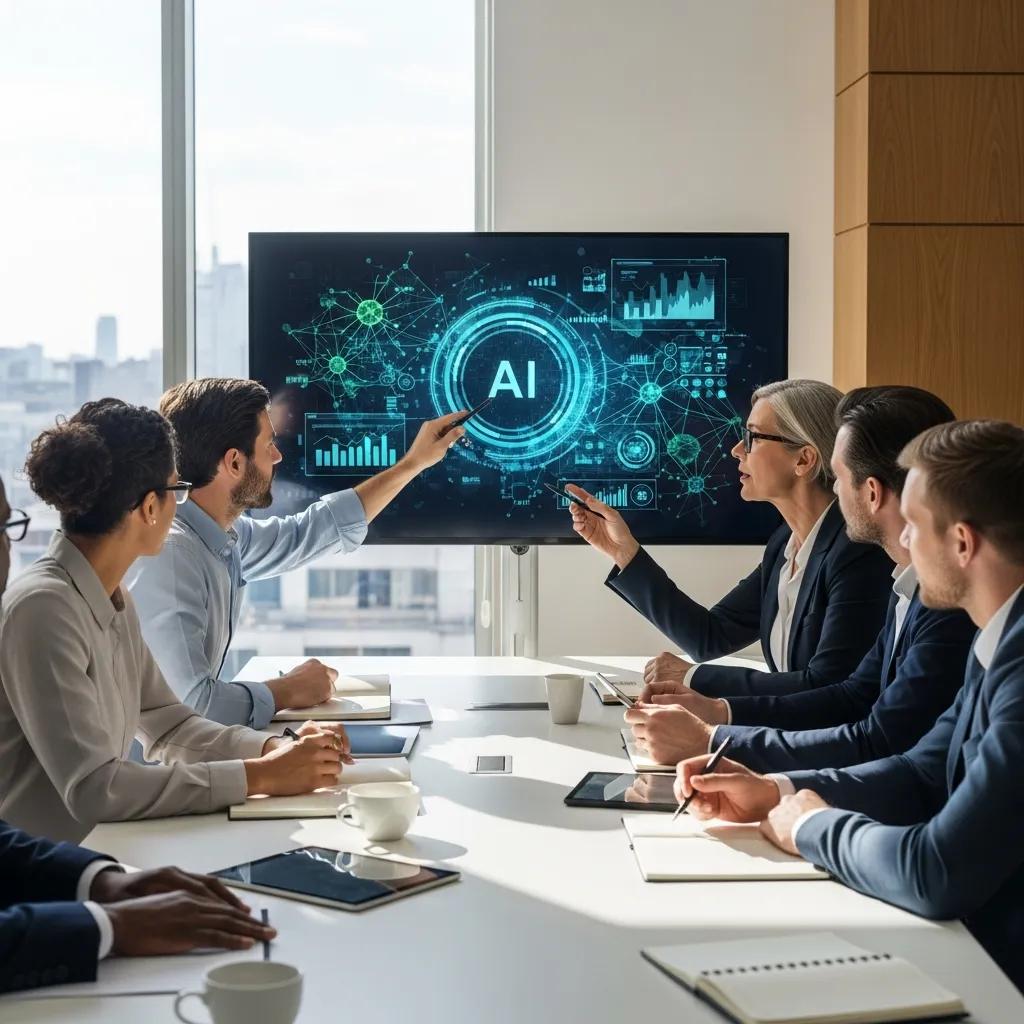Artificial intelligence (AI) is revolutionizing the workplace, profoundly impacting employee satisfaction. AI tools go beyond automating tedious tasks; they reshape entire work experiences. From personalized learning to smarter decision-making, AI supports workers across industries. Let’s explore how AI enhances employee satisfaction and creates more fulfilling work environments. The modern workplace is rapidly evolving with AI at the forefront. PwC’s artificial intelligence study shows AI could contribute $15.7 trillion to the global economy by 2030. This is more than the current output of China and India combined. Beyond the economic impact, AI significantly affects how employees experience their work.
Enhancing Productivity and Reducing Burnout
AI boosts employee satisfaction by increasing productivity and reducing burnout. The United States has seen its largest decline in annual productivity since 1974. Concurrently, employee burnout is rising. AI is a game-changer in addressing these challenges.
By automating repetitive tasks, AI frees employees to focus on meaningful, creative work. This increases productivity and enhances job satisfaction. A study shows automation saves workers an average of 3.6 hours weekly.
This is significant time saved for higher-level activities which become more fulfilling. Employees have the opportunity to learn and engage more thoroughly with less repetitive work.
Personalizing the Employee Experience
AI enables unprecedented workplace personalization. From tailored learning programs to customized schedules, AI helps create more engaging work. AI-powered platforms analyze performance data and career goals.
This data is used to recommend personalized learning paths. This customized professional development helps employees acquire skills, keeping them engaged.
AI-Enhanced Onboarding
Onboarding sets the tone for an employee’s experience. AI is making significant onboarding strides. Research shows around 68% of businesses use AI in their onboarding processes.
AI can personalize onboarding, ensuring new hires have necessary information and resources. This tailored approach improves employee satisfaction from the start.
Fostering Work-Life Balance
AI enhances employee satisfaction beyond the office. By increasing efficiency and automating tasks, AI helps create flexible work. This flexibility is crucial for maintaining work-life balance, essential for today’s workforce. Quiet quitting can be countered through these programs.
A UK four-day work week pilot program with 61 companies and 2,900 workers reported success. Almost every participating company (92%) will continue the shortened week. AI plays a crucial role in optimizing workflows for flexible arrangements.
Improving Decision-Making and Reducing Stress
AI processes data to provide actionable business insights, transforming organizational decision-making. This leads to better business outcomes and reduces employee stress. Access to AI-powered tools helps employees analyze complex situations.
These intelligent automation systems allow more confident decisions. This confidence and reduced stress contribute significantly to overall job satisfaction.
Enhancing Employee Engagement Through AI
Employee engagement is critical for job satisfaction, and AI serves as a valuable tool. A study revealed 56% of executives reported favorable ROI from their employee engagement strategies.
AI helps identify patterns in employee behavior and feedback. This lets organizations proactively address issues and create engaging work environments.
For example, AI-powered sentiment analysis can improve employee morale and predict issues before they escalate.
AI-Driven Feedback and Recognition
Regular feedback and recognition are crucial for employee satisfaction. AI enables more frequent, meaningful feedback loops.
AI tools analyze performance and provide real-time feedback. This helps employees understand their progress and improvement areas.
AI helps identify recognition opportunities. Consistent feedback and recognition boost morale and job satisfaction.
Addressing Concerns and Building Trust
While workplace AI benefits are clear, addressing concerns about job security and privacy is important. A Qualtrics survey shows 66% of executives see AI’s positive effects on employee experience, versus only 35% of individual contributors.
Organizations must be transparent about their AI initiatives and involve employees in implementation. This builds trust and alleviates fears about job displacement.
The Future of Work: AI and Employee Satisfaction
AI will play a greater role in shaping employee experiences. The World Economic Forum predicts that by 2025, 85 million jobs may be displaced by machines. At the same time, 97 million new roles will emerge, adapted to the division of labor between humans, machines, and algorithms.
This shift emphasizes the importance of learning and adaptation. Organizations leveraging AI to enhance skills and create engaging work environments will attract and retain talent.
FAQs about How AI improves employee satisfaction
How does AI improve job satisfaction?
AI improves job satisfaction by automating repetitive tasks, allowing focus on meaningful work. It personalizes learning, enhances decision-making, and enables flexible work arrangements.
How can AI improve employee experience?
AI personalizes onboarding, provides learning opportunities, offers real-time feedback, and enables efficient workflows. These enhancements lead to engaging work experiences. AI helps reduce hybrid work challenges and other issues.
How does AI improve customer satisfaction?
AI improves customer satisfaction through faster response times, personalized service, and accurate problem-solving. This often increases employee satisfaction as well. Employee well-being is enhanced with reduced workloads. They find increased purpose in customer relations.
How can AI improve employment?
AI creates AI-related job opportunities, enhances existing roles with AI tools, and enables flexible arrangements. It also improves candidate-job matching through AI-powered recruitment.
Conclusion
How AI improves employee satisfaction involves various work experience aspects. AI is reshaping the modern workplace. It has multiple uses, including boosting productivity, reducing burnout, personalizing learning, and fostering better work-life balance.
Organizations must approach AI implementation thoughtfully, focusing on enhancing, not replacing, human capabilities. This creates satisfying, engaging, and productive work environments for everyone.
The future of work is being shaped by AI. Embracing AI and focusing on employee experience creates workplaces where humans and machines thrive. This results in high employee satisfaction and organizational success.






